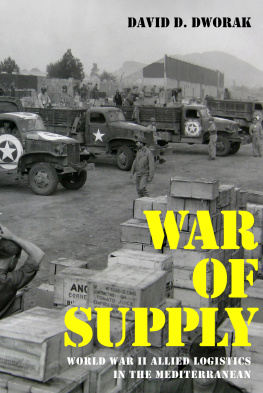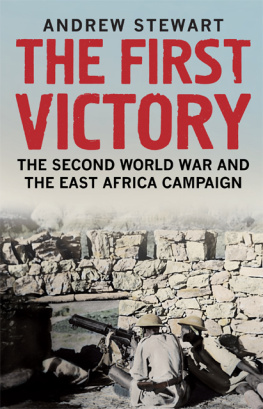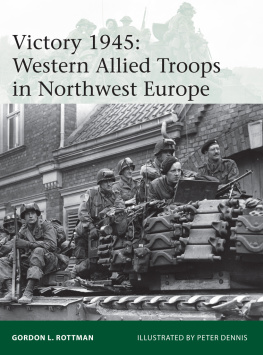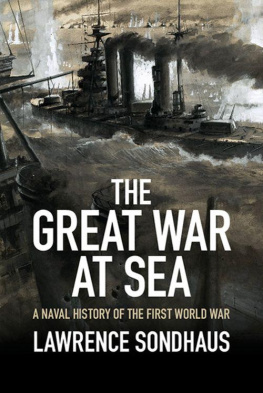2015 by the University Press of Kansas
All rights reserved
Published by the University Press of Kansas (Lawrence, Kansas 66045 ), which was organized by the Kansas Board of Regents and is operated and funded by Emporia State University, Fort Hays State University, Kansas State University, Pittsburg State University, the University of Kansas, and Wichita State University
Library of Congress Cataloging-in-Publication Data Ehlers, Robert.
The Mediterranean air war : airpower and Allied victory in World War II / Robert S. Ehlers, Jr.
pages cm. (Modern war studies)
Includes bibliographical references and index.
ISBN 978-0-7006-2075-3 (cloth : alk. paper) ISBN 978-0-7006-2076-0 (ebook)
. World War, 1939 1945 Aerial operations.. World War, 1939 1945 CampaignsMediterranean Region.. Air powerMediterranean RegionHistoryth century.. Combined operations (Military science)Case studies.. Mediterranean RegionHistory, Militaryth century. I. Title. II. Title: Airpower and Allied victory in World War II.
DE 2015
940.5421 dc
2014040567
British Library Cataloguing-in-Publication Data is available.
Printed in the United States of America
10987654321
The paper used in this publication is recycled and contains percent postconsumer waste. It is acid free and meets the minimum requirements of the American National Standard for Permanence of Paper for Printed Library Materials Z 39.48-1992 .
Preface and
Acknowledgments
The Romans called it Mare Nostrum (Our Sea)the body of water stretching from the Straits of Gibraltar to the shores of the Holy Land. In their day, when warfare existed in two dimensions, they discovered, initially at great cost, that their sea must remain so without fail. The dangers to the republic were too great to consider what might happen should they lose control of the waters surrounding and connecting their territorial possessions. The Carthaginians came as close as anyone to bringing about Romes undoing, by sea and by land. The Romans never forgot that.
For the next two millennia, the Mediterranean Seas grand-strategic importance waxed and waned. At times, it was more a trade thoroughfare than a battleground; at others, it was the domain in which the destinies of the Great Powers were decided. Even as the age of sail replaced that of galley warfare in the Mediterranean, the Middle Seas importance remained great as an artery for economic exchange and as a strategic pivot connecting the many states, communities, and peoples ringing its shoreline. Control of this body of water, with its central location and the rapid movement this allowed, gave it continuing strategic importance even as the Great-Power rivalries of the eighteenth and nineteenth centuries shifted the focus to the north. The completion of the Suez Canal in 1868 and the United Kingdoms ultimate control over it, along with Gibraltar at the other end of the Middle Sea and Malta in the middle, conferred strategic advantages. Among these was the means to move goods and military forces around the world with unprecedented speed. Even as the Great War (World War I) made the Mediterranean a relative backwater, the British were not about to risk losing control of the Suez Canal. In fact, quite the opposite: Allenbys campaign against the Ottomans was designed not only to destroy their armies and create fissures in the Turks already shaky facade, but in the process to push this menace away from Suez.
During the period between the world wars, at a time when the Mediterranean might easily have receded further into its widely perceived backwater status, several things happened that made it important once again in fundamental ways. The development of the internal-combustion engine and the British discovery and exploitation of oil reserves in Iraq and Iran made access to this commodityand the ability to protect it from hostile powersa prominent part of British strategy. Benito Mussolinis adventurism in Abyssinia, as he proclaimed a New Rome, further concerned the British and made clear the vulnerability of the Suez Canal and oil resources. The world economic crisis, which led directly to the collapse of a fledgling democracy in Japan and set that country on a decidedly warlike course by the early 1930 s, further alarmed policy makers in London, who now recognized the importance of Egypt and the Suez Canal as the means for moving military forces to defend their holdings in the Far East and, most importantly, India. Finally, the Spanish Civil War, and the German and Italian roles in it, concerned Great Britain and France about these countries wider aims in the Mediterranean.
That said, Adolf Hitler soon revealed his real focus: the countries of Central and Eastern Europe and those of the West as stage setters for his ultimate prizethe Soviet Union. However, he maintained a strong interest in controlling the western Mediterranean, and the approaches to it, in order to keep both British and US forces away from Europe and Africa. His failures in the subsequent diplomatic engagements with Vichy France, Spain, and Italy played an important role in Germanys defeat both in the Mediterranean and in the larger war. While Hitler focused predominantly on the Continent, British and Italian leaders set their sights on the protection and expansion, respectively, of their Mediterranean holdings. And so, once again, the Middle Sea would become a place of battle. Yet several things had changed fundamentally by 1939 , particularly in the realm of air warfare.
The Romans had been able to conquer the lands surrounding the Mediterranean through a deft and ruthless form of combined-arms warfare in two dimensions. With the advent of modern aircraft, a third dimension entered the combined-arms equation, and the countries that employed all three branches of their armed servicesarmy, navy, and air forcewith the highest degree of coordination, creativity, and operational effectiveness would have a major advantage in the coming war. This advantage was magnified in the Mediterranean theater from Italys declaration of war on June 1940 until Victory in Europe Day precisely because of its unique geography and central location. It was an arena ideally suited for effective combined-arms operations and a fatal one for those who proved wanting in this respect. Those who learned quickly had a great advantage. During the five-year campaign, the Allies ultimately proved more adept than their Axis adversaries at this kind of warfare. This occurred both in spite of and because of early German victories and Allied defeats. Pushed back on their heels, the British had to learn or lose. Conversely, the Germans believed, with some justification, that their way of war had proven itself quite convincingly in the conflicts first year. However, the Battle of Britain gave them their first taste of defeat at the hands of an adversary that employed aircraft and the various assets and capabilities facilitating their use with greater skill. The Germans faced the British Royal Air Force (RAF) again in the Mediterranean, and despite some impressive but costly victories in Greece and on Crete, the Luftwaffe (German Air Force) again proved unable to prevail. This defeat in the air over North Africa and the Mediterranean, though a gradual and complex process, and one in which the Luftwaffe often performed effectively at the tactical and operational levels, was a major boon for the Allies as they gained control of the Mediterranean and put their now formidable air assets to work attacking high-value Axis targets in Europe.








